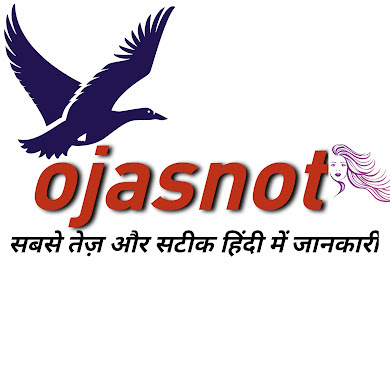MSC Semester-III Syllabus 2022/M.sc Sem 3 Syllabus Inorganic 2025
HNGU MSC Semester 3 Syllabus inorganic Chemistry, HNGU Inorganic Practicals Exam Syllabus 2025,HNGU Inorganic OLD Questions Paper Syllabus, Inorganic Chemistry Previous Year Paper, HNGU Inorganic Chemistry Syllabus,HNGU MSc Inorganic Chemistry Syllabus 2025
M.Sc. Semester-III
Inorganic Chemistry Paper –I
(Inorganic Spectroscopy)
CHNN-601-(I)
Unit:- 1 E.S.R. & N.Q.R. Spectroscopy 25% (15 Hrs)
⏭️ E.S.R. Spectra of transition metal complexes
Theory of E.S.R. (Basic principles). The presentation of E.S.R. Spectrum,
Hyperfine splitting, Spin Hamiltonian, Applications.
⏭️N.Q.R. Spectroscopy:-
Theory of N.Q.R. Origin of Transition, Experimental Techniques. Townes and
Dailey’s Formula, Structural Information from N.Q.R, Illustrated by suitable
Examples.
Unit:- 2 X-ray Photoelectron Spectroscopy 25% (15 Hrs)
Application of
(a)Valence-electron & photo-electron Spectroscopy
(b) X-ray photoelectron spectroscopy.
Unit:-3: Magneto Chemistry: 25% (15 Hrs)
Principle & application of magneto chemistry: Basic (Diamagnetic, Para
magnetic, ferromagnetic, anti-ferromagnetic), Magnetic properties of free
ions.
Unit:-4 Organo Metallic Compounds (OMC): 25% (15 Hrs)
General Introduction & Principles. Factors governing the properties of OMC,
General trends in Chemical Properties, Nature of metal-carbon Bond,
Preparative methods, Reactions & applications.
Organo Aluminum & Beboranes Compounds, Organo boranes
Reference Books:
1. Spectroscopic Identification of Organic Compounds by R. M. Silverstein and F. X.
Webster, 6th edition, John Wiley & Sons.
2. Introduction to Spectroscopy by D. L. Pavia, G. M. Lampman and G. S. Kriz, 3rd
edition, Thomson Brooks/Cole.
3. Spectroscopic Methods in Organic Chemistry by D. H. Williams and I. Fleming, 4th
edition, Mcgraw–Hill Book Company.
4. Organic Spectroscopy by William Kemp, 3rd edition, Palgrave.
5. Organic Spectroscopy–Principles and Applications by Jag Mohan, 2nd edition,
Narosa Publishing House.
6. Spectroscopy of Organic Compounds by P. S. Kalsi, 5
th edition, New Age
International Publishers.
 |
| HNGU MSC Sem 3 Inorganic Chemistry Syllabus 2022-23 |
M.Sc. Semester-III
Inorganic Chemistry Paper –II
(Bio-inorganic & Organometallic Compounds)
CHNN-602-(I)
Unit:- 1 Bio-inorganic Chemistry 25% (15 Hrs)
Introduction, The Biochemistry of iron, Iron Storage and Transport,
Haemoglobin and Myoglobin, Cytochromes. Other Iron-Porphyrin
Biomolecules, other Natural Oxygen Carriers, Iron-Sulphur Proteins.
Unit:-2 The Biochemistry of Transition metal 25% (15 Hrs)
Zinc, Copper, Cobalt, Molybdenum and Tungsten Miscellaneous Other
Elements: Vanadium, Chromium, Nickel.
Unit:-3 Organometallic Compounds 25% (15 Hrs)
Organometallic Compounds & metal complexes as catalyst in Homogeneous
& Heterogeneous Systems: Oxidative-addition, Reductive elimination.
Migration (insertion) Reactions, Hydroformylation, Hydrogenation,
Carboxylation.
Polymerization, Fisher-Troops Process, Water Gas Shift Reaction.
Unit:-4 Uranic Elements 25% (15 Hrs)
Chemistry of Trans Uranic Elements:
Reference Books:
1. Organometallic Compounds, Vol.1 & 2 by G.E. Coates, M.L.H. Green and K.
Wade, Metheun & Co. Ltd. London EC4.
2. Bioinorganic chemistry Gurudeep Chatwal
3. Inorganic chemistry, 45th Edition, James E Huheey and Ellen A Keiter.
4. Bioinorganic, Bioinorganic and Supramolecular Chemistry,P S Kalsi & J P Kalsi
5. Advanced Inorganic chemistry, 6th edition , Cotton and Wilkinson
6. Concoise Inorganic Chemistry J.D Lee
7. Organometallic Compounds by G.E. Coates, John Wiley & Sons, Inc., New York.
8. Organometallic Chemistry by H. Zeiss, Reinhold Publishing Corporation, New
York.
9. Organometallic Chemistry by R.C. Mehrotra & Anirudh Singh, New Age
International (P) Limited, Publishers, New Delhi.
10.Progress in Inorganic Chemistry, Vol. 1 by F.A. Cotton, Interscience, Pub.Inc.,
New York.
11.Organotransition Metal Chemistry by John F. Hartwing, University Science Books,
Sausalito, California.
M.Sc. Semester-III
Inorganic Chemistry Paper –III
(Corrosion)
CHNN-603-(I)
Unit:-1 Types of Corrosion 25% (15 Hrs)
a. Importance of Studying Corrosion.
Electrochemical Mechanism- Type of Corrosion Damage, (Uniform Attack,
Pitting, Dezincification, Intergranular Cracking).
b. Corrosion Tendency And Electrode Potential: The Oxygen Electrode and
Differential Cell, Aeration Cell, Pourbaix Diagram, Emfiane Galvanic Series.
More Updates on new Website www.ojasnot.com
Unit:-2 Atmospheric Corrosion 25% (15 Hrs)
a. Polarization : The polarized cell, How measured, Causes of polarization,
Hydrogen
over voltage, Influence of polarization on corrosion rate.
b. Atmospheric Corrosion : Types of atmospheres, corrosion product films.
Factors influencing corrosivity of the atmosphere, Remedial measures.
Unit:-3 Underground Corrosion 25% (15 Hrs)
a. Underground Corrosion: Factors Influencing The Corrosively of Soils,
Pitting, Characteristics, Remedial Measures.
b. Oxidation and Tarnish : Theory e.g. of Oxidation, Wagner Theory of
Corrosion.
Oxidation resistant alloys.
Unit:-4 Corrosion & Cracking 25% (15 Hrs)
a. Stray Current Corrosion: Sources of stray current Detection of stray
current.
Method of Measuring the Resistivity of Soil, Effect of stray current on steel
covered by concrete. Damage of sneep by SC.
b. Stress Corrosion Cracking - Mechanism of cracking.
Hydrogen Cracking - Mechanism of Cracking.
Corrosion Fatigue - Mechanism of Cracking.
Fretting Corrosion - Mechanism of Cracking.
Treatment of Water and Steam System. Hot and Cold Water Treatment,
Boiler Water Treatment.
Reference Books:
1. Handbook of Industrial Chemistry, Vol.1 by K.H.Davis, F.S.Berner, CBS
Publishers,Bangalore.
2. Comprehensive Coordination Chemistry, Chapter 57, 58.
3. Insight into Speciality Inorganic Chemicals, Chapter 15, by David Thompson, The
Royal Society of Chemistry, 1995.
4. New Trends in Green Chemistry, 2nd Edition by V.K.Ahluwalia and M.Kidwai,
Anamaya Publishers, 2007.
5. Pietro Pedeferri Corrosion Science and Engineering Springer ISBN:
9783030073800
M.Sc. Semester-III
Inorganic Chemistry Paper –III
(Co-ordination Chemistry)
CHNN-603-(I)
Unit:- 1Theories of bonding: 25% (15 Hrs)
Theoretical principles of CFT, Introduction to spherical harmonics & the shape
of d-orbitals, Derivation of crystal field potential for tetragonal, cubic and
Square planar arrangement of ligands around central metal ion. Transformation
of these potential from Cartesian to spherical harmonics. Effect of Voct on d1
system. Evaluation of the various integrals involved. Solution of the secular
determinant to obtain energies and corresponding wave functions, Crystal field
splitting diagram for Oh, Td & Square planar systems.
Unit:-2Theory of Electronic Spectra 25% (15 Hrs)
R.S Coupling & J. J. Coupling
Ladder operators :
- Step up & Step down operators and their use to obtain wave functions.
- Derivation and use of the equation.
X(α)=sin(l+1)α/2 =2A2g/3T1g
Sin α/2
Unit:-3 Weak Field Approximation 25% (15 Hrs)
The splitting of the free ion terms of d2 in an oh field Calculation in weak
field,approximation energy of the various terms;2A2g,3T2g, & 3T1g derived
from 3F(d2) in an Oh field.
Strong field approximation :
Determination of multiplicities by the method of descending symmetry.
Calculation of energy of various terms within the frame work of strong field
approximation.
Unit:-4 Electronic Spectra of Metal Complexes 25% (15Hrs)
Introduction, Selection rules, Vibronic coupling spectra of Ti(III), VO(IV),
Ni(II), Co(II), Co(III), Fe(II), Fe(III), Cu(II), Mn(II) complexes under
different geometries, Jahn-Tellor theorem.
Reference Books:
1. Advance Coordination Chemistry 1st Edition (English, Paperback, Shukla P R)
Edition: 1st Edition, 2012 ISBN: 9789350515839, 9350515830
2. Inorganic Chemistry 3rd Edition 2008 by Donald A Tarr and Gary Miessler.
3. UGC Advanced Inorganic Chemistry (English, Paperback, Keemti lal, S.K.
Agarwal) ISBN: 9789386306289, 938630628X
M.Sc. Semester-III
Inorganic Chemistry Paper –IV
“Inorganic Pharmaceutical & Medicinal Chemistry”
CHNN-604-(I)
Unit:- 1 Pharmacopocia and Monography: 25% (15 Hrs)
(a) Pharmacopocia and Monography:
Electrolytes, major physiological ions, physiological acid-base balance,
acid base imbalance, electrolytes used for replacement therapy,
electrolytes used in combination therapy.
(b)Gastro-intenstinal agents-Acidifying agents, gastric artacids, protective
and adsorbents, saline cathartics
Antioxidants and buffers
Unit:-2 Respiratory System 25%(15Hrs)
Expectorants and Emetics-Symptoms of Respiratory Disease
Expectorants, Antitussive and Emetics.
(a)Topical agents- Protective, Astringents and Antimicrobials
Unit:-3 Role of Metal ions in Medicine 25%(15Hrs)
Trace Elements- Copper, Iron, Iodine, Manganese, Zinc, Their Compounds
and Their Relevance.
(a) Metals in Medicine: Biomedical Significance. Role of Metal Ions in Drug
Design Platinum Antitumor Agents-Discovery and Development, Synthesis.
Unit:-4 Medicinal Metal Complexes 25% (15 Hrs)
(a) Vanadium Complexes- oxovanadium (IV)complexes for diabetes treatment
(b) Medicinal Applications of Metal complexes of N-Heterocyclic Carbenes
(NHC)-NHC Precursors and Metal Complexes-Pyridine Based NHC
Precursors and Metal Complexes, NHC Rhodium Complexes.
References book:
1. A handbook of Inorganic Pharmaceutical Chemistry,Dr.K.G.Bothara,Nirali
Prakashan.
2. Medicinal Inorganic Chemistry: American Chemical Society,Washington,DC
3. Medicinal Inorganic Chemistry: Orvig. CAbrams, M.J.Ed.,Chemical Reviews
Vol.99,No.9, American Chemical Society,Washington,DC.1999.
4. Metallopharmaceuticals I & II,Clarke,M.J.,Sadler,P.,Eds,Springer,Verlag,New
York,Inc.1999.
5. Uses of Inorganic Chemistry in Medicine, Farrell, N.,Ed, Springer-Verlag, New
York,Inc.1999.
M.Sc. Semester-III
Inorganic Chemistry Paper –V
(Environmental Chemistry)
CHNN-605-(A)
“SUBJECTIVE ELECTIVE”
Unit:- 1- Environmental Chemistry 50% (15 Hrs)
Types of Water Pollutants: Organic, Inorganic, Radionucluds and their
determination COD, BOD and Industrial Waste Water Treatment For Solids,
Metals, Dissolved Organics and Inorganics.
Air Pollutants-CO, SOx, NOx, CFC, Hydrocarbon and Their Monitoring
Disposal of Hazardous Wastes.
Unit:- 2- Chemical and Bio fertilizers 50% (15 Hrs)
Chemical Fertilizers, Applications, Adverse effects, Advantage of Bio
fertilizers. Types of Mineral Fertilizers: Nitrogenous Fertilizers, Phosphoric
and Potassium fertilizers, NPK grades.
Nitrogen bio fertilizer: Rhizobium(Symbiotic) Azetobactor(Non Symbiotic)
Phosphorus Bio fertilizer: P.S.B. phosphate solubilizing bacteria. More Updates on new Website www.ojasnot.com
References:
1.Nanoparticles,buildings blocks of nanotechnology,Rotello V.Khwer
Acad/ptenum publication,
N.Y.2004
2.Nanoscale materials in chemistry-ed.by Klabunde K.J.John-wile,N.Y.2001
3.The chemistry of nanomaterials: Synthesis,properties and applications
ed.by.C.N.Rao, A.Miller and A.K.Cheetham,wiley-VCH,2004
4.Nanotechnology, Richard Booker,Earl Boysen,Wiley
5.Environmental Chemistry,Akde,Wiley Eastern Ltd.
6.Environmental Chemistry,B.K.Sharma,H.Kaur,Goel Publishing
House,Meerut.
7. Environmental Chemistry, B.K.Sharma,Goel Publishing House,Meerut.
M.Sc. Semester-III
Inorganic Chemistry Paper –III
(Advanced Industrial Inorganic Chemistry)
CHNN-605-(B)
“SUBJECTIVE ELECTIVE”
Unit:- 1- Nanomaterials in Chemistry 50% (15 Hrs)
Introduction to Nanomaterials and Nanochemistry, Classification of Nanomaterials
General Methods of Preparation and Applications. Chemical and catalytic aspects of
Nanocrystals-Nanomaterials in catalysis, as adsorbents, as new chemical reagents.
Unit:- 2- Smart Materials 50% (15 Hrs)
Ceramics, Alloys, Gels and Polymers. Piezoelectric Materials, Electrostrictive and
Magnetostrictive Materials, Rheological, Thermoresponve, pH sensitive Halochromic
Materials, Electrochromic Materials and Smart gels.
References:
1. Nanoparticles,buildings blocks of nanotechnology,Rotello V.Khwer
Acad/ptenum publication,
N.Y.2004
2. Nanoscale materials in chemistry-ed.by Klabunde K.J.John-wile,N.Y.2001
3. The chemistry of nanomaterials: Synthesis,properties and applications
ed.by.C.N.Rao, A.Miller and
A.K.Cheetham,wiley-VCH,2004
4. Nanotechnology, Richard Booker,Earl Boysen,Wiley
5. Environmental Chemistry,Akde,Wiley Eastern Ltd.
6.Environmental Chemistry,B.K.Sharma,H.Kaur,Goel Publishing House,
Meerut.
7. Environmental Chemistry, B.K.Sharma,Goel Publishing House,Meerut.
More Updates on new Website www.ojasnot.com
M.Sc. Semester-III
Inorganic Chemistry Paper –III
Practicals
CHNN-606-(I) & CHNN-607-(I)
1. Qualitative Analysis(Mixture of eight radicals, out of which two must be
radical of less familiar elements W,Li,Th,V,Ce,Be,Ti,Mo)(Minimum-six)
2. Complexometric analysis of mixtures containing two components
(at least four)
3. Water Analysis (Minimum Five)
Reference Books:
1. Qualitative Chemical semimicro analysis by V. N. Alexeyev, Mir Publishers
Moscow.
2. Vogel’s Qualitative Inorganic Analysis by G. Svehla, Orent Longman, New
Delhi.
3. Vogel’s Textbook of Quantitative Chemical Analysis, 5th edition by G. H.
Jeffery, J. Bassett, J. Mendham and R. C. Denney, ELBS Publication, 1996,
Chapter 2, 3, 11.



